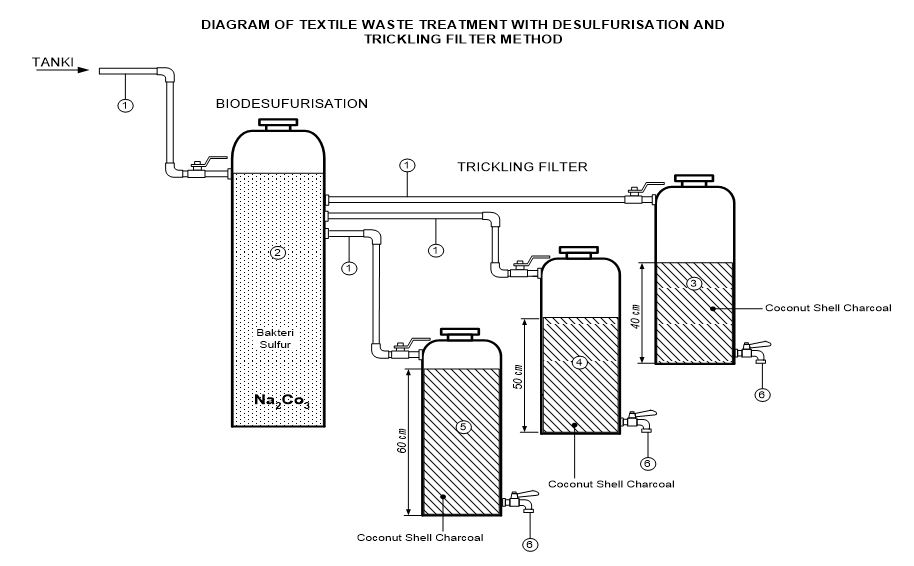
Waste generated as a result of the leather processing industry can be in the form of solid, liquid and gas waste. Waste generated from the textile industry made from clothing H2S and TSS which if not treated properly, will be very dangerous for health and the environment. One of the efforts to overcome this problem, is offered in the form of a simple, inexpensive and efficient H2S and TSS waste treatment technology, namely by using a combination of bio-desulfurization and trickling filtration methods as a means of treating liquid waste in the leather-based textile industry, especially for parameters, H2S and TSS. Bio-desulfurization is a sulfur removal process by utilizing the metabolism of microorganisms, namely by converting hydrogen sulfide into elementary sulfur, and trickling wastewater filtration is a treatment process by spreading wastewater into a pile or media bed consisting of Coconut Shell Charcoal to reduce H2S and TSS content in leather-based clothing industry wastewater. The results of the study for H2S parameters in wastewater treated in bio desulfurization reactor and trickling filter with Coconut Shell Charcoal filtering media, the biggest decrease was in filter media with a thickness of 60 cm with a contact time of 30 minutes of 4.43 mg/lt or 88.84%. Likewise, the largest decrease in TSS parameter content was found in a 60 cm filter media thickness with a contact time of 30 minutes of 47.67 mg/lt or 82.54%.
Total file downloads: 5